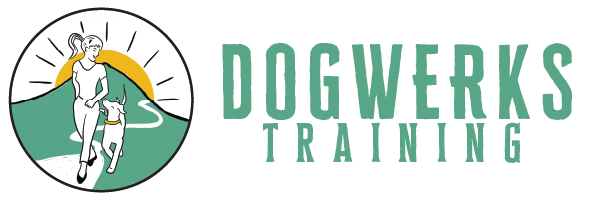Equipment options for dog training:
There are SO MANY options out there when it comes to training equipment that it can be totally overwhelming!
As I see it, the purpose of equipment is to keep your dog safely contained and to communicate clearly to establish expectations that allow eventual off-leash control.
To this end, I’ll offer my two-cents on various options:
Harnesses:
A harness provides added security for a dog whose neck is larger than its head and can therefore easily slip a flat collar. It is a good tool if a dog must be tied out, as hitting the end of the line will be more comfortable. However, a harness was designed to make it comfortable for a dog to pull weight and for that reason, it can be a difficult tool with which to teach your dog to walk on a loose leash.
Head Collars/Haltis:
This tool fits like a horse’s halter over the dog’s nose and around the ears. It is designed to turn the dog’s head to the side as they pull to take their power away, and this tool can make walking a strong dog easier. The drawbacks that I have found are that many dogs find them highly annoying and spend a lot of energy trying to remove them, and the fact that the mechanism reduces the power of the dog’s pulling action, but doesn’t seem to actually teach them not to pull.
My preference is to use a collar and maintain a loose leash except when briefly popping the collar to communicate with the dog. I believe that collars can communicate the most information and therefore provide the shortest route to off-leash control. There are a few different collar types that each communicate differently to the dog.
Type 1: Flat Collar
This is the collar I recommend to leave on a dog and display tags. If your dog is small or sensitive, it may be sufficient as a training tool. The draw back is that when you ‘pop’ (make a quick, directional gentle jerk and release motion) on a flat collar, the collar itself does not change shape so it just pulls on the dog. Most dogs react to pulling pressure by pulling back so this collar provides less clear communication than some other options. It is also difficult to control a large or strong dog that decides to pull on the leash.
Type 2: Choke Chain
This collar must be used skillfully and must never be left on an unsupervised dog as it’s possible for the collar to get hung up and choke a dog. The advantage of a choke chain over a flat collar is that the choke chain, used properly, has a quick “grab and release” feel that is more attention getting than the flat collar, and can communicate direction more clearly.
It is important to fit a choke chain properly depending on which side of you the dog will be working on. If the dog is on your left, form the choke chain into a “P” as if writing on a black board then allow the dog’s face to become the board and slip it over their head. If the dog is working on your right side, reverse the collar into a small “q” shape and slip it on.
When using a choke chain it is very important to use a “pop” and RELEASE motion to communicate and never allow tension on the leash.
Type 3: Pinch or Prong collar
This is a scary-looking collar that is very off-putting at first and can certainly be misused. However, it is my favorite collar for most of the dogs that I work with, because, used properly, it is a finesse communication tool that allows me maximum responsiveness with minimal force. When a quick light pop and release motion is made with a prong collar, it feels to the dog like a gentle bite to the neck. This is a way that dogs communicate dominance to each other in play and they, therefore, recognize the sensation and respond with attention to the handler. This collar helps the dog to see the human in the leader role which expedites the training process. While this collar is generally effective with a very light touch, it also has a large range so that a dog that is intensely focused elsewhere (dog aggressive, highly prey driven, etc.) can still be snapped out of it with a stronger ‘pop’.
The only brand of Prong collar that I use is Herm Sprenger. These are high-quality stainless steel collars that are much less stiff than other brands. I prefer to use the regular (not quick release) style that can be put on either by taking the collar apart at one of the prongs and reconnecting around the neck, or rolling the whole collar inside out (so there are no pokies near the eyes) and slipping it over the head and rolling back into place. The correct fit of a prong collar is to allow about the width of two stacked fingers between the neck and collar.





